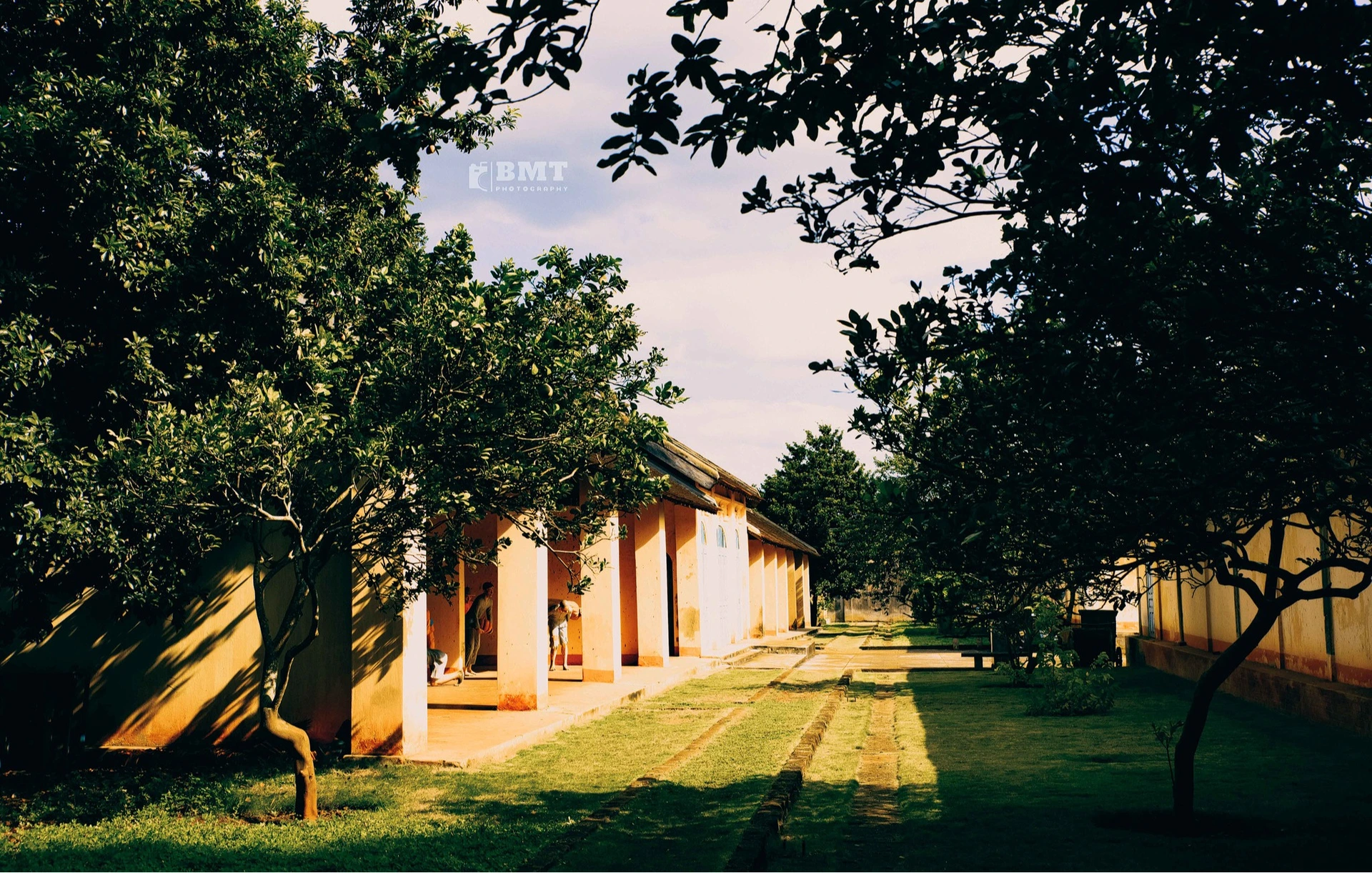Buon Ma Thuot Prison is located at No. 17, Pham Hong Thai Street, Tu An Ward, Buon Ma Thuot City, Dak Lak Province. The prison was built in the years 1930-1931, where many patriotic prisoners were held. Nestled in the middle of a sparsely populated area, surrounded by wild, dense mountains and forests, this place has a heroic and quiet character over time.
Through a period of ups and downs of the country's history, in 1980, the exile house was recognized as a national historical monument. Through 2 renovations in 1992 and 2006, this place was put into operation, opened to visitors to study and learn about the history of Dak Lak in particular and of Vietnam in general.

Buon Ma Thuot exile house wears a nostalgic yellow, tinged with time. The entrance to the exile house was cleaned, repainted spaciously, and on both sides of the walkway were neatly manicured green trees.
The exile house was built with a total area of nearly 2 hectares, including 4 surrounding walls 4m high, 40cm thick, 4 corners with solid guards. The entire prison complex has many construction items such as prisons, managers, medical houses, kitchens, teaching houses, torture areas, workshops, chapels, desk areas ... These works came into operation in 2 periods, the French colonial period and the resistance war against the US.

At the beginning of construction, Buon Ma Thuot exile house was quite simple with the frame of the house made of wood, the walls were covered from muddy soil mixed with straw, inside was bamboo core, the outermost part was plastered with a thin layer of cement, the roof was roofed. After a period of operation when the number of prisoners is increasing. The exile house was rebuilt more solidly with brick walls and tile roofs around the end of November 1931. Later, due to many prison escapes, this building was carefully and solidly restored as it is now.
Inside the prison premises there are a total of 6 collective prisons, numbered from 1 to 6. Each row has an area of about 180m2, can hold more than 100 prisoners, the main gate faces south. The prisons were all sprawled, with high windows, careful barricades, solid masonry walls, roof tiles, ceilings covered with barbed wire mesh to prevent prisoners from escaping.
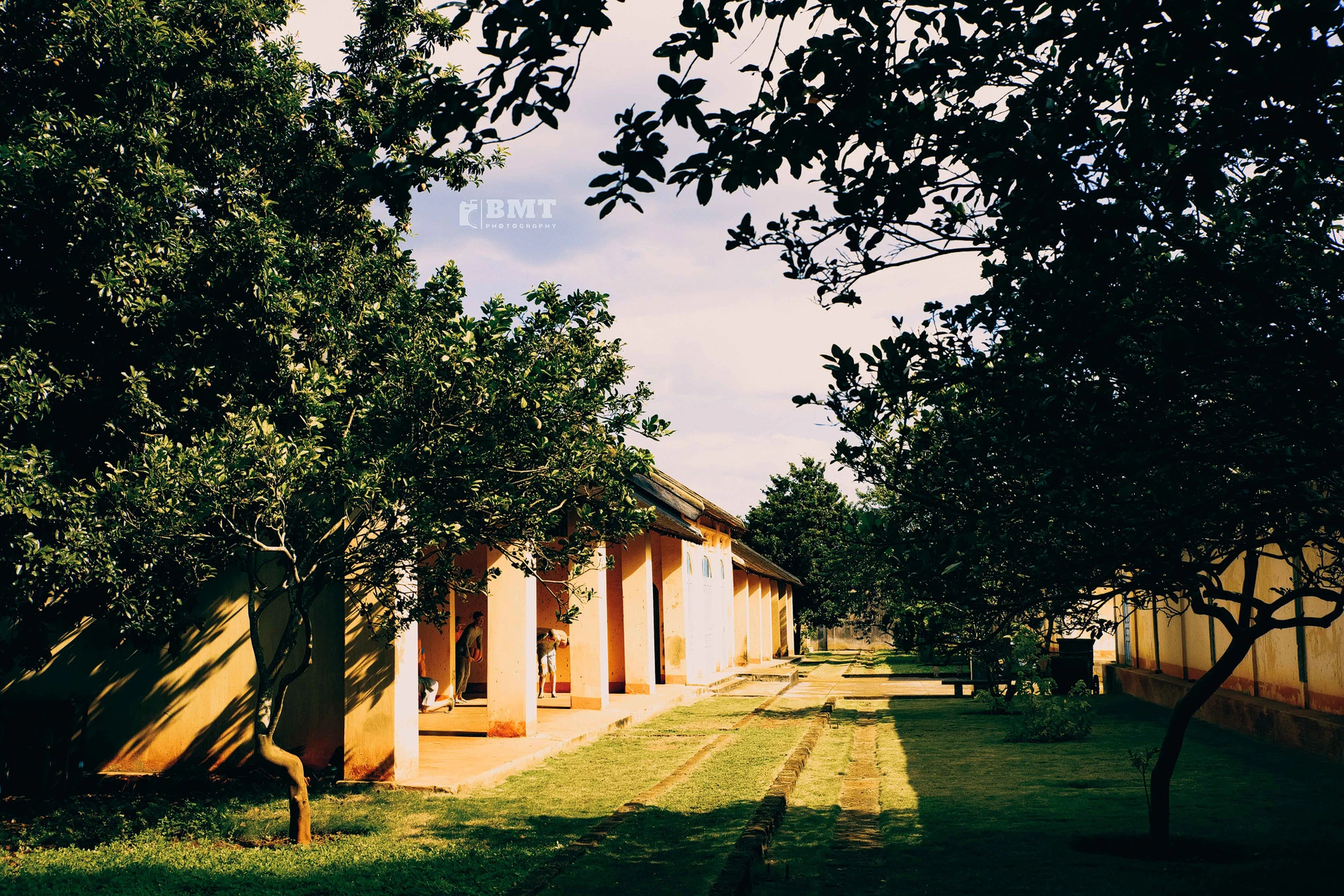
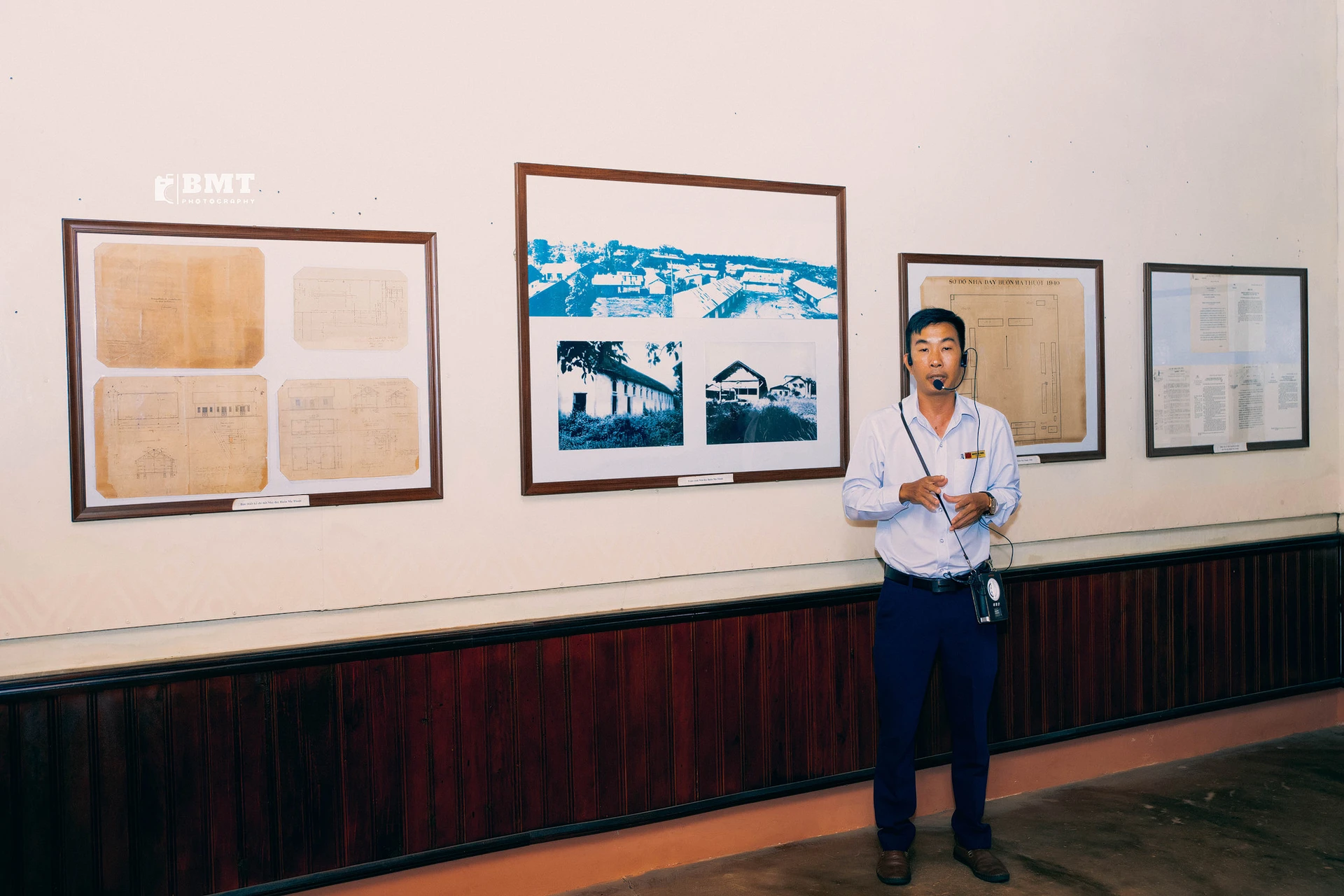
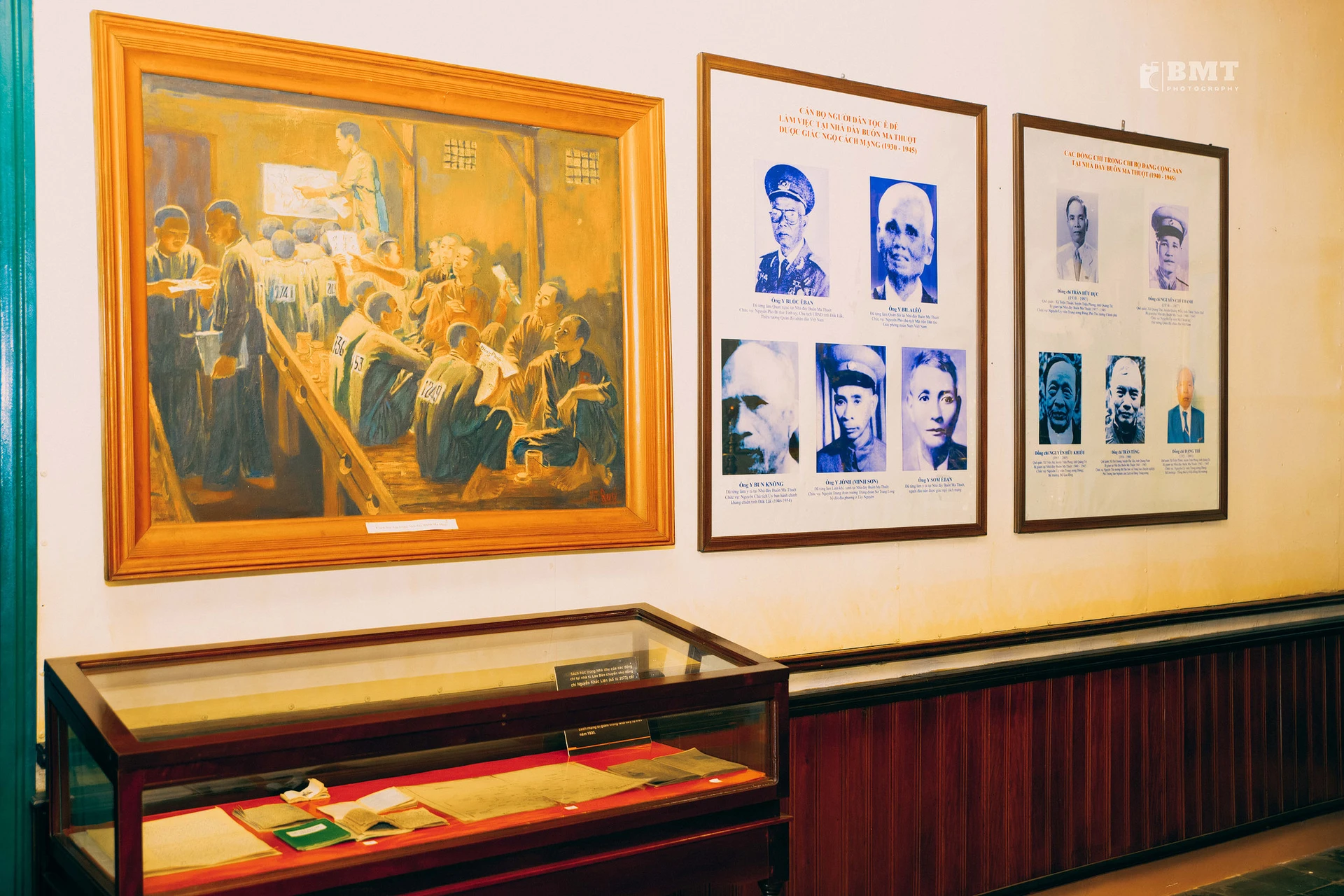
In addition to 6 collective prisons, the cell area is a special detention place for prisoners with a high level of danger. Here political prisoners are exiled more austerely, held in a space of about 2m2, shackled for 24 hours and all activities take place on the spot. But they also did not expect that it was this barbaric brutality that created an organized "loyal force" that did not subdue and did not surrender. In 1940, the first Communist Party cell in Dak Lak was established here.
The management area of the former exile was remodeled into a gallery. This place currently holds many documents, images and artifacts about the process of building exile houses, struggle movements, the development of the Communist Party in exile and of Dak Lak province. Buon Ma Thuot exile house is a special national monument of Vietnam.
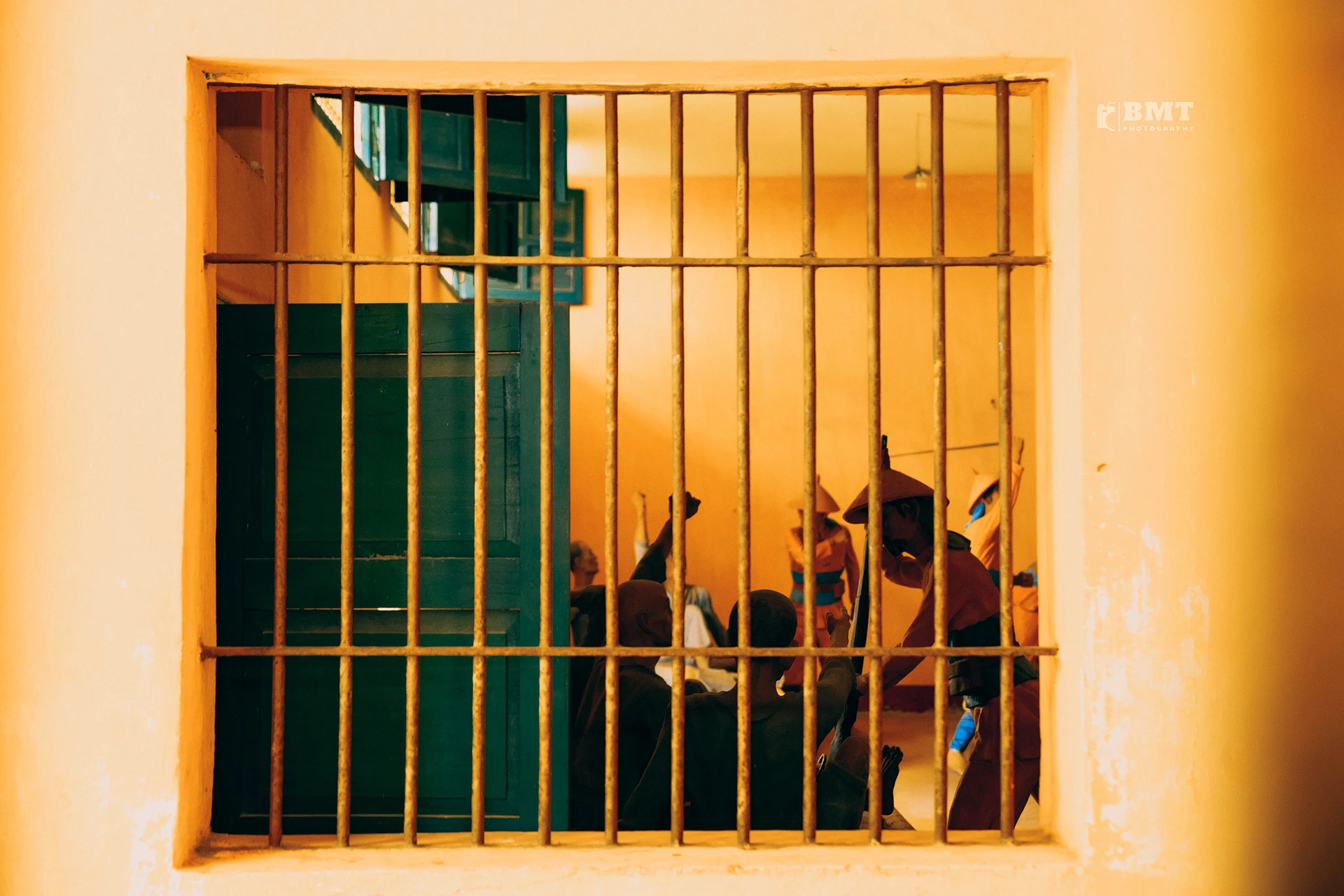
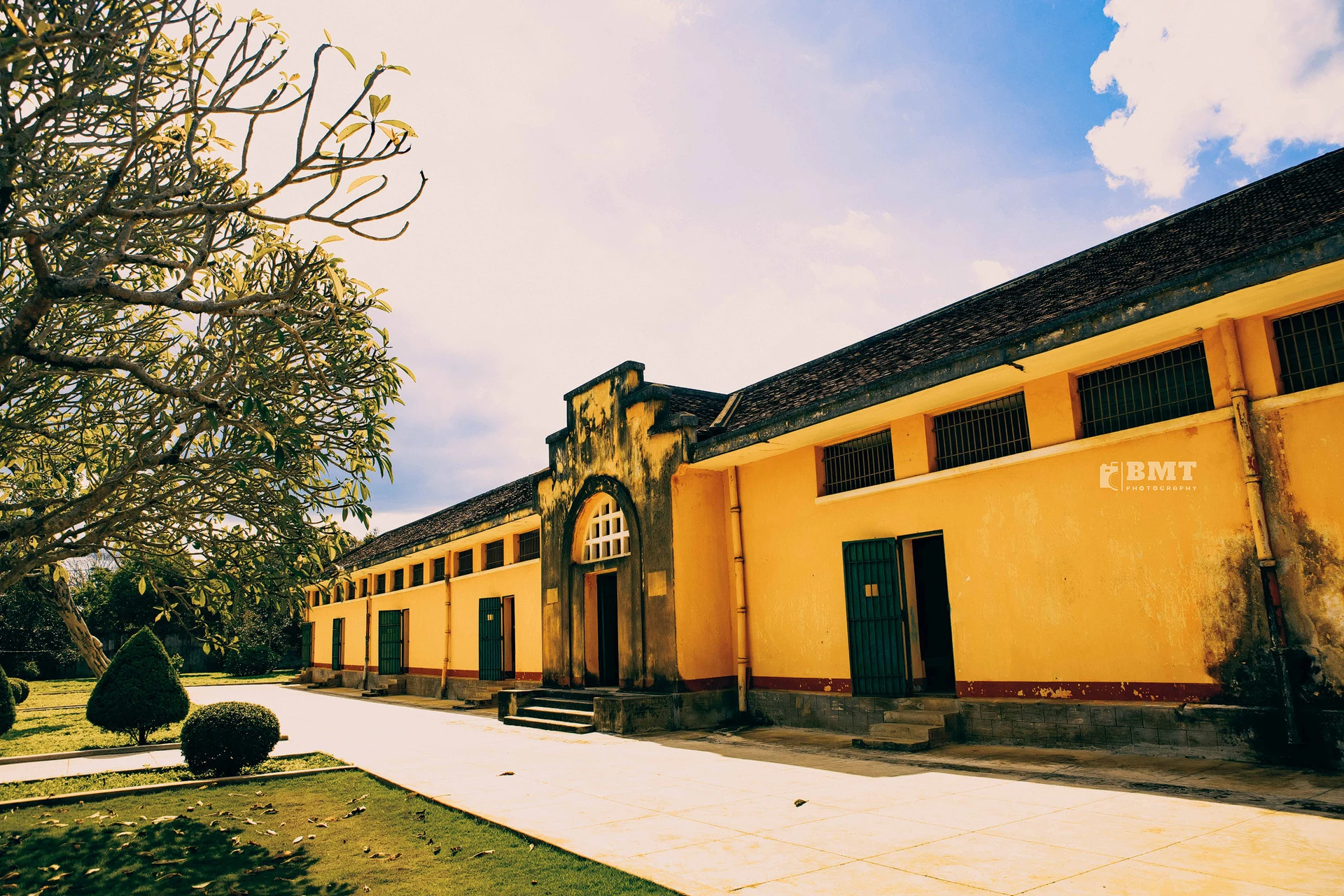
According to the flow of time and undergoing 2 renovations, this special historical site has more or less changed in appearance, landscape or facilities, but still ensures to keep the original material, color, shape, size during the remodeling process.
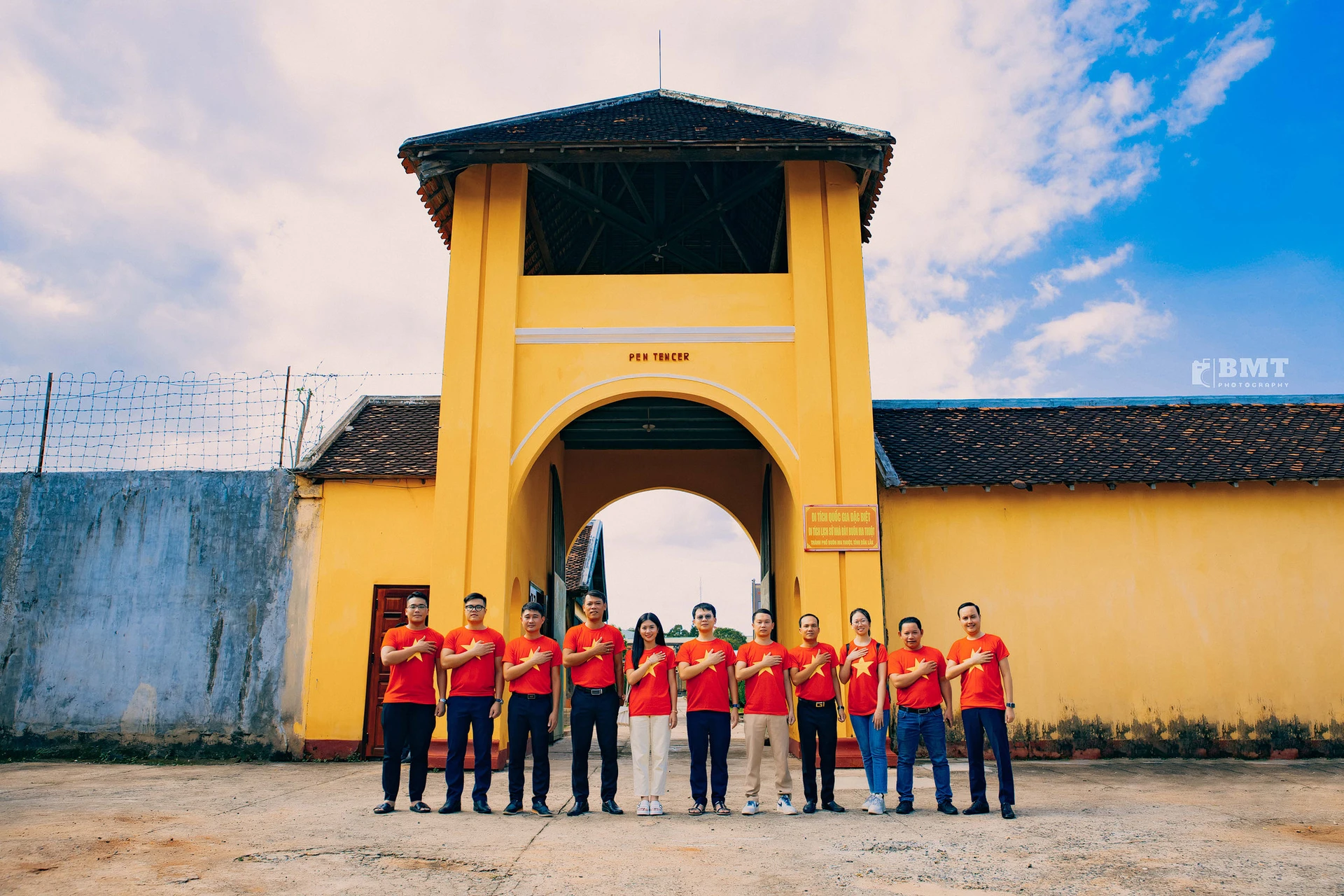
Currently, the landscape of the exile compound is always cleaned, well-groomed and decent every day. The space is peaceful and quiet but no less heroic. The entrance ticket price for adults is 20,000 VND; and children are 10,000 VND. Visitors when visiting will be explained and explained thoroughly about the history of the exile through each period.
Photo: Nguyen Quoc Bao
According to VNN
